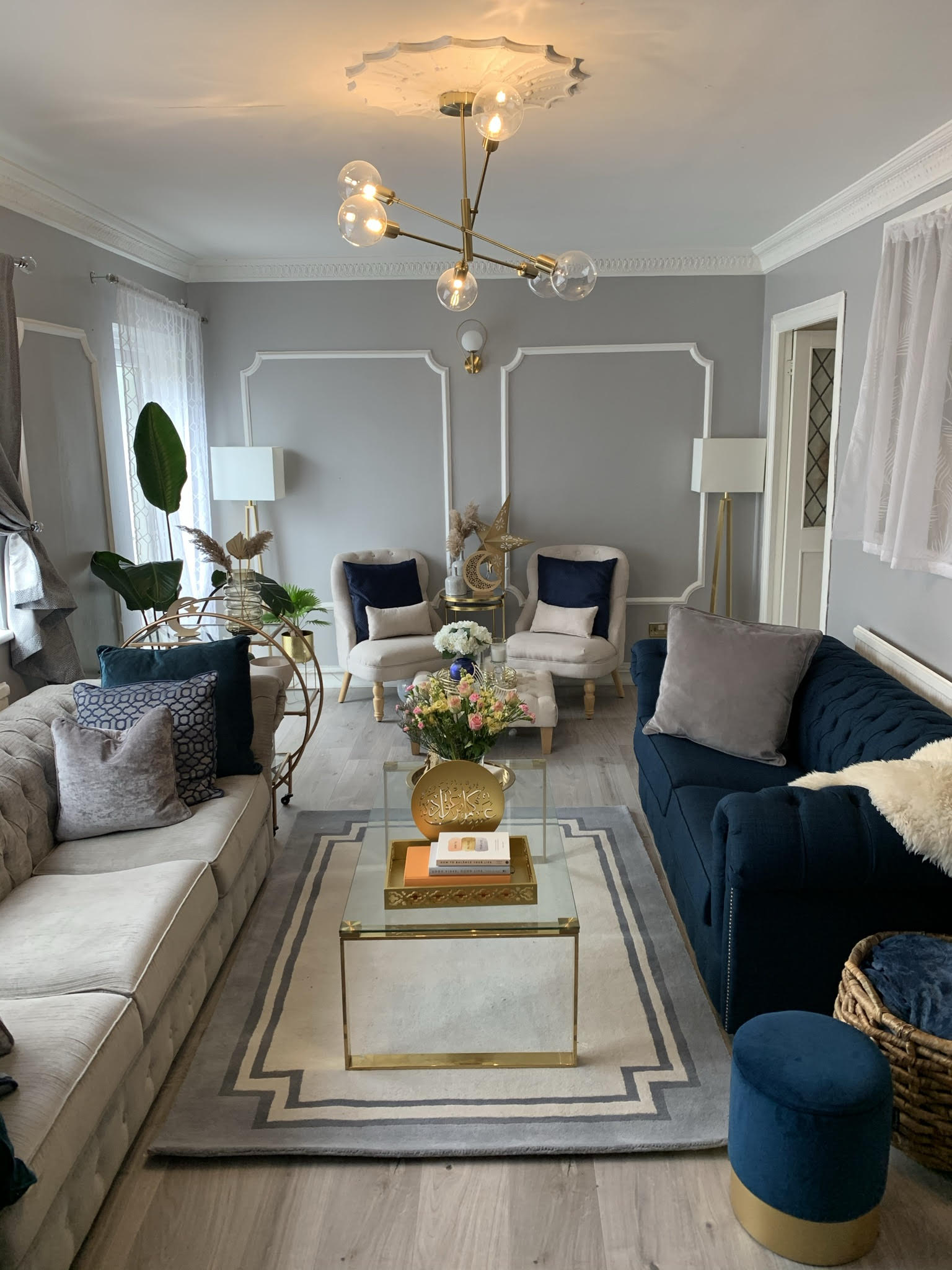

With the rise in popularity of home décor accounts on Instagram, we have also seen the evolution and rapid growth of certain interior design trends. Moulding or wall panelling is one such trend that seems to form part of the blueprint for an Instagram-able home! Panelling or moulding is a decorative feature that actual spans back centuries, and with so many variations and modern spins, it’s no wonder its such a hit for so many interior obsessed decorators.
In fact, one of the reasons I fell in love with my own home was the moulding, coving and ceiling rose in the living room (above). A traditional style, and made from plaster rather than the currently used wood, it served as a beautiful original feature of this 1950s house.
While traditional panelling is a popular look today, if it isn't for you, no worries: There is a popular wall panel style for every personal taste. I've broken them out, below.
Slat panels
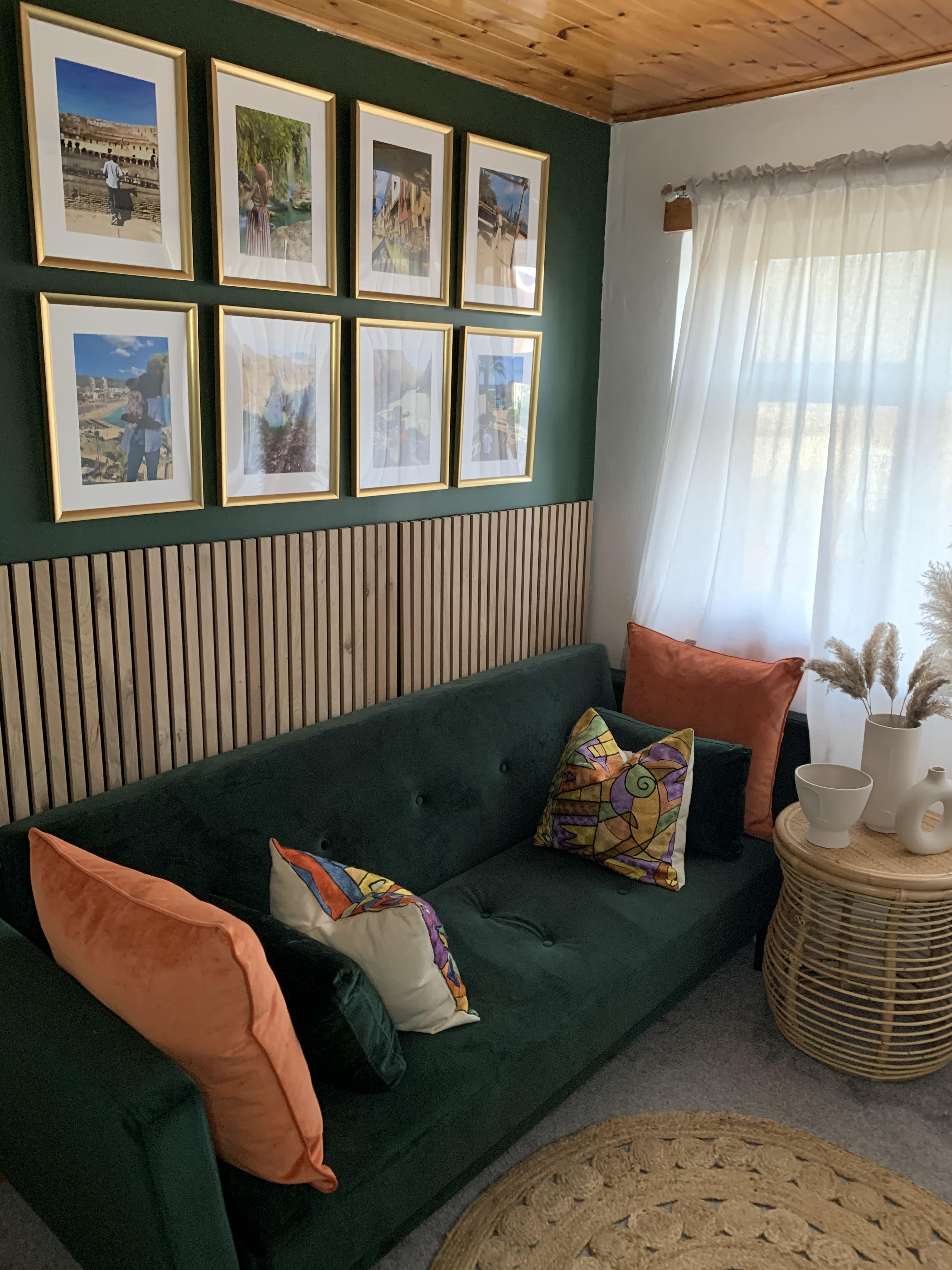
After moving into our traditionally panelled house, I have since added a completely different style of panelling to our living room and guest room. Slat panels.
Slat walls have increased in popularity in the last year. The appeal is likely to come from the simplicity of design and therefore installation, the fact that they can be purchased ready made or DIYed, and that they can be in keeping with multiple interior styles such as boho/nordic, minimalism and midcentury design.
They can be installed on a full wall as a feature wall, half wall, centre panel or side panel. Or can be cleverly used to disguise doors and other carpentry.
- Keep reading: How an inexpensive panelled accent wall transformed one nursery
Traditional moulding panels

Probably the style with the most longevity and potentially the most popular type of panelling I see, are moulding panels. This type of panelling is essentially wood trim cut with various grooves and detail that are fixed to existing walls to accentuate and add structure to the wall.
Join our newsletter
Get small space home decor ideas, celeb inspiration, DIY tips and more, straight to your inbox!
A little history - During the 17th and 18th centuries, the creation of bolection moulding by English craftsmen transformed the look of rooms among the affluent upper classes, according to Period Homes. Richly carved mouldings were also used enhanced the door frames, window lintels, fireplace mantels and staircases. In addition to wood, the primary material used in British and American houses, the French perfected the use of cast plaster mouldings (similar to the style in my living room above) to enhance exquisitely carved woodwork, known as “boiseries.” An entire industry arose with studios specialising in interior paneling and its ornamentation.
The most common style currently would be rectangle frame mouldings at the top and bottom of a wall, divided by a dado rail in the centre or below centre. I will be trying out this style in my hallway redecoration so I’ll report back on how it goes!
Wainscoting is a similar style to moulding panels but fitted only to the lower half of the wall. It is a type of panel that lines a room for decorative purposes but was originally created to keep out dampness and cold in the 16th century before modern insulation was invented.
Board and batten
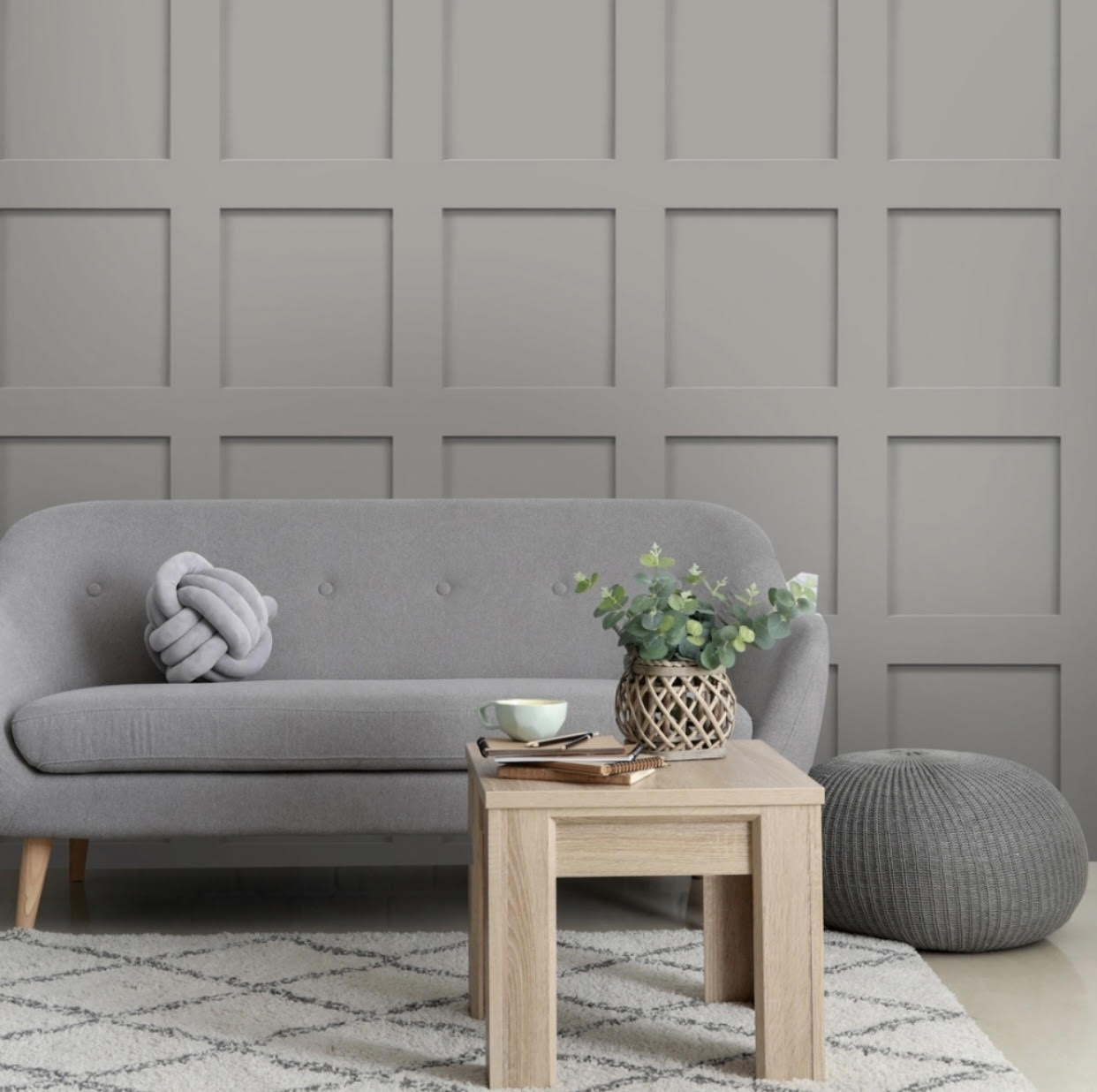
Another very popular and Instagram-able panelling style are variations of board and batten panelling. Installed using wider thin wood, often MDF, the panels are installed vertically or vertically and horizontally together. This style of panel is in keeping with more farmhouse, traditional or rustic-themed rooms.
If you're not handy with a miter saw or don't trust yourself to create straight lines, there are also wallpapers available in this style. An example of such is the wallpaper above, from ilovewallpaper.
Asymmetrical or statement panels
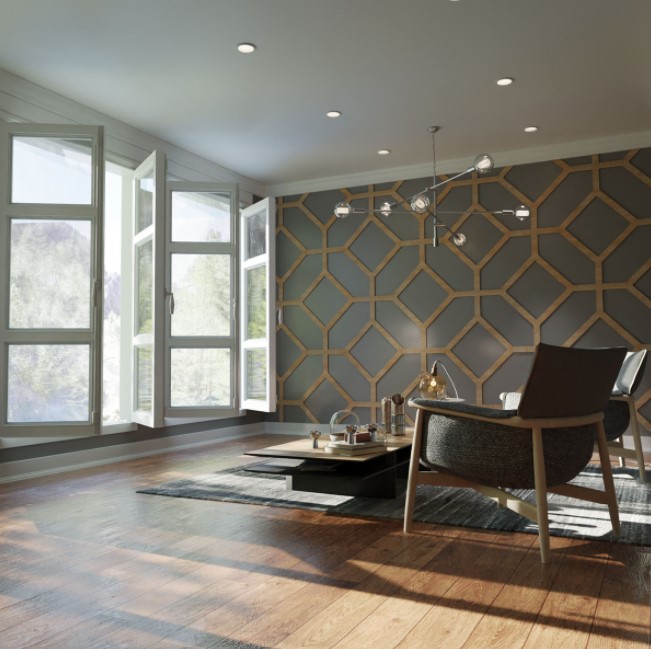
As an alternative to wallpaper, pre-cut geometric panelling is a popular option for a statement wall. It can be ordered in a wide range of patterns and styles, or you can create it yourself with pre-purchased plans from sites like Etsy, and some basic DIY skills.
The most contemporary panelling style is asymmetrical panels. Identifiable by their free form, this style of panelling is popular with avid DIYers hoping to create a unique panel design that can be placed however the installer choses. The wood used is usually a thin board type MDF or slat wall style panels. The great thing about this style of panelling is the free flow and therefore the lack of pressure to cut the wood to particular angles to form a specific shape.
Whatever panelling style you go for, you’ll definitely be adding a point of detail and interest to your home. It was a selling feature for me, so could definitely be one for another. Just don’t go panel crazy in every room as they can be a pain to remove!
Alimah-Shadia Sitta is part of Real Homes' Real Experts panel. She's a UK-based investment banker, designer and DIYer and shares her favourite tips, projects, and ideas with us twice a month.
-
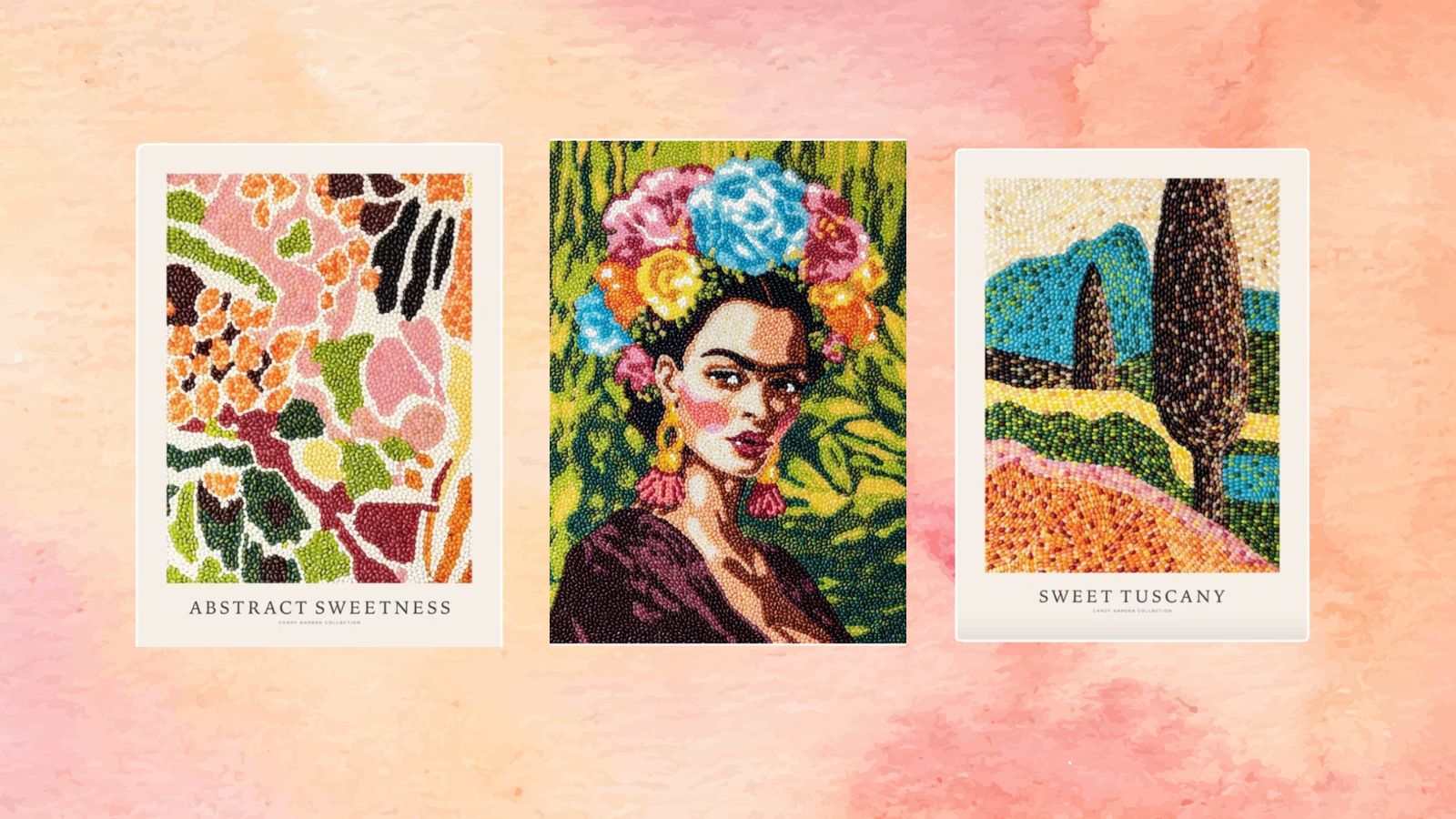 New Desenio prints made entirely of candy take mosaics in a sweet new direction — and start at just $29.95
New Desenio prints made entirely of candy take mosaics in a sweet new direction — and start at just $29.95Yes, folks: the new Desenio prints in the "Candy Garden" collection are made entirely of jelly beans. Here's what to know about the whimsical collection and where to shop
By Danielle Valente Published
-
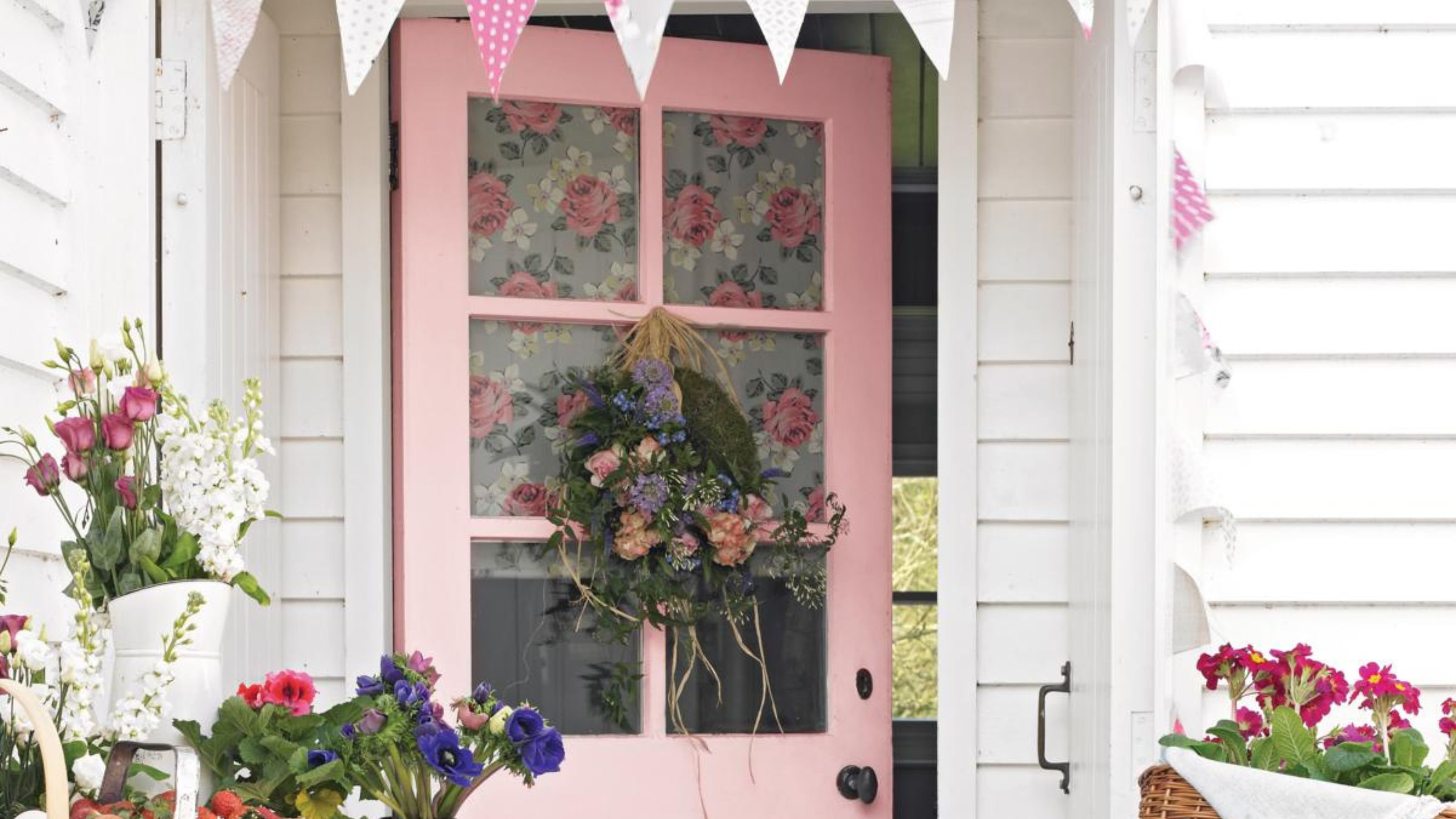 7 sweet spring front door ideas to try this season
7 sweet spring front door ideas to try this seasonLooking for spring front door ideas? We've spoken with designers to find out what they do to make doors look beautiful for the season and curated buys to match
By Eve Smallman Published
-
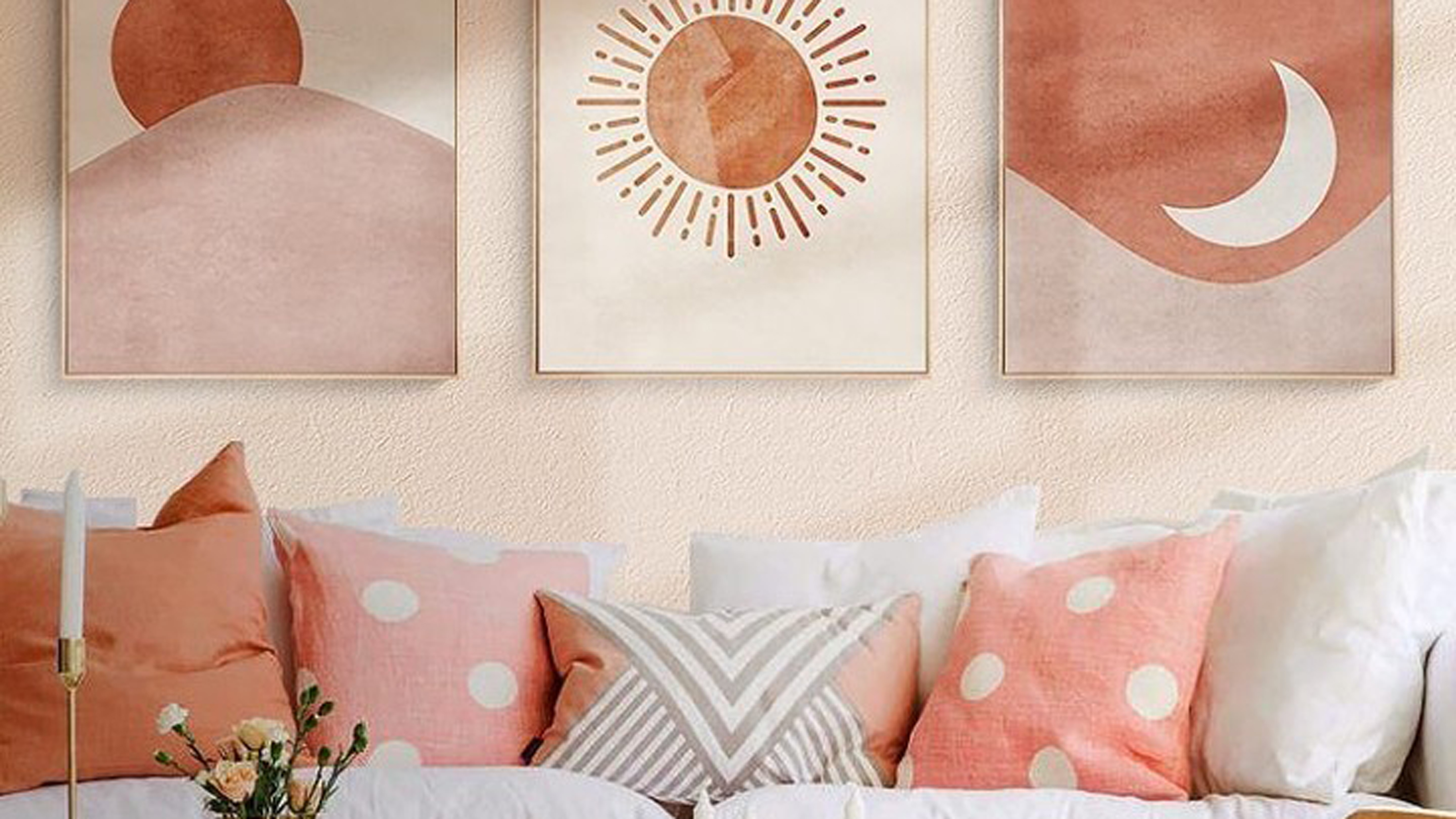 I'm a home stylist — but these are my regret buys
I'm a home stylist — but these are my regret buysEven "experts in the know" make mistakes when buying decor for rentals. I'm sharing my guilty-as-charged picks so that you can swerve
By Holly Phillips Published
-
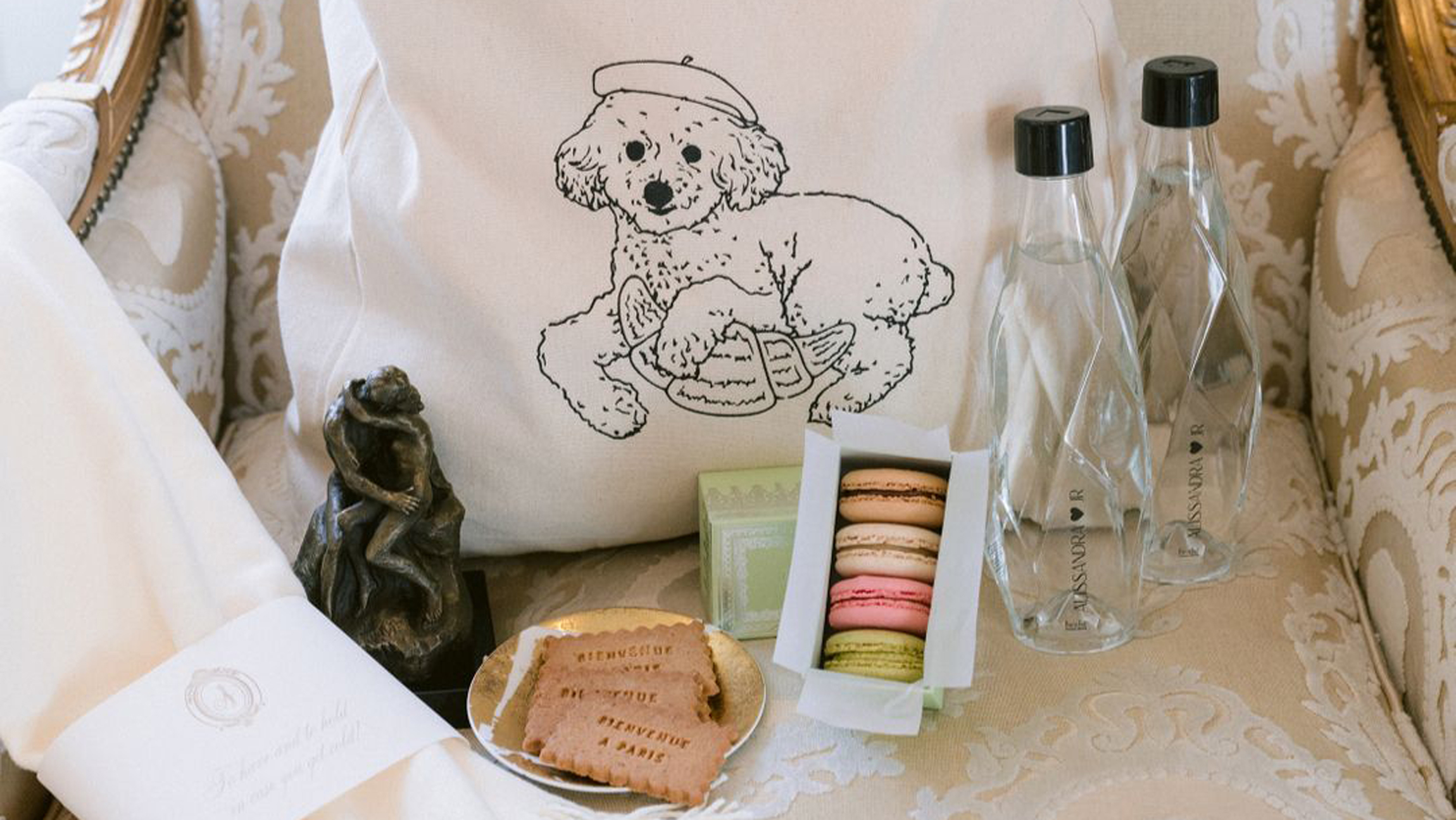 8 thoughtful ideas to elevate a guest's stay
8 thoughtful ideas to elevate a guest's stayMake guests feel welcome and extra special in your abode with affectionate touches and doting details of happy
By Holly Phillips Published
-
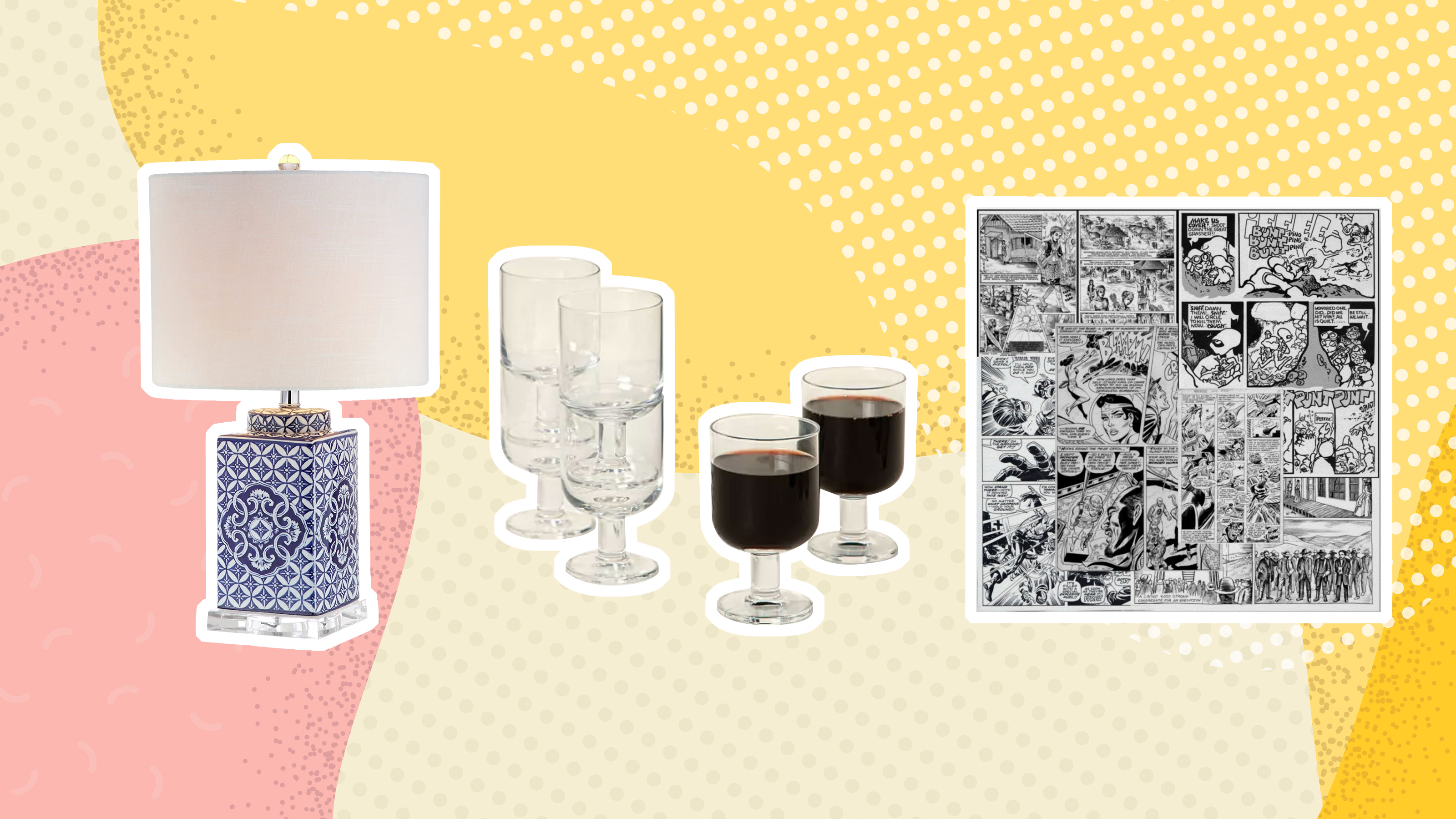 I just spent a week visiting my fam in France, and I now have 5 new home decor cravings
I just spent a week visiting my fam in France, and I now have 5 new home decor cravingsAfter spending a week visiting my family in France, there are five things I'm ordering ASAP for my London rental
By Camille Dubuis-Welch Published
-
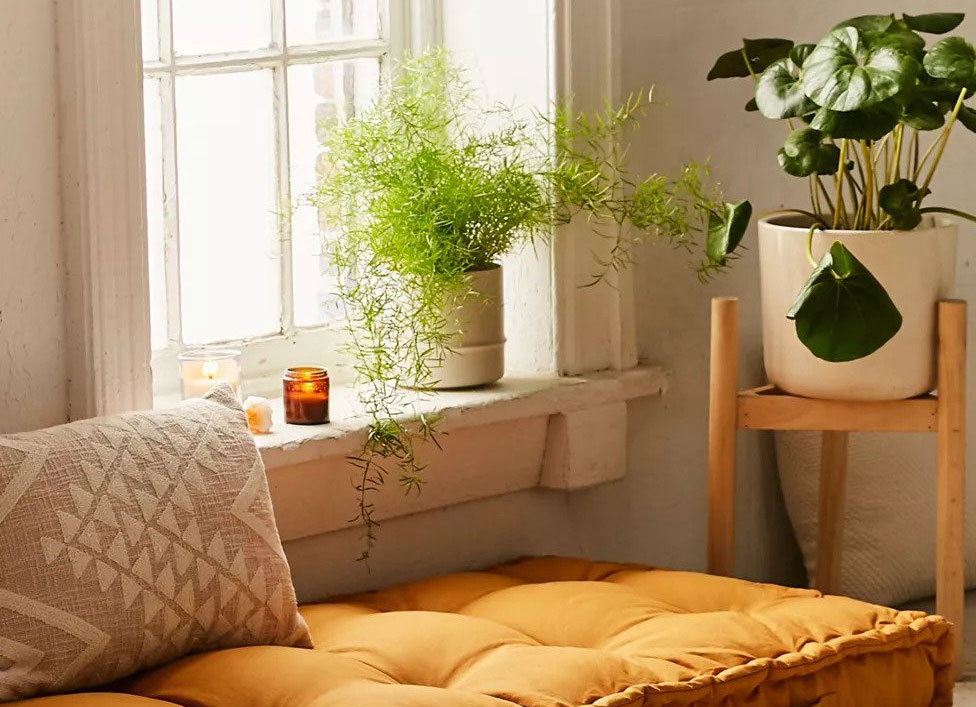 5 colors you should skip using in a small apartment, according to a designer
5 colors you should skip using in a small apartment, according to a designerAn interior designer tells us which five colors to avoid painting a tiny apartment and how to incorporate those out-of-bounds hues instead and avoid small apartment color mistakes
By Kara Thompson Published
-
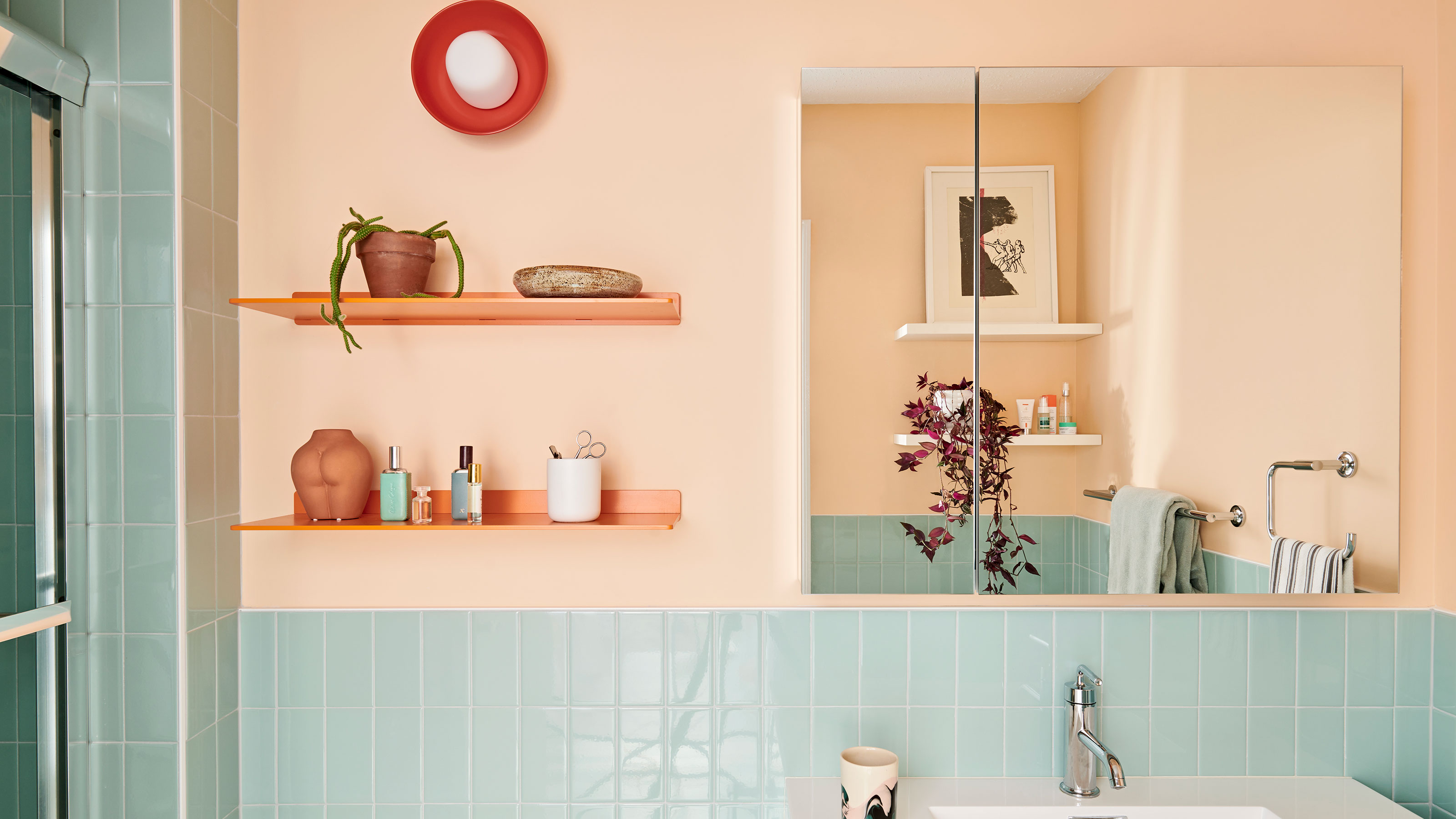 Sick of winter? Bring these spring colors into your home now
Sick of winter? Bring these spring colors into your home nowThese spring home color trends are the best remedy for a long, chilly winter. Here's how to incorporate these hues into your home
By Kara Thompson Published
-
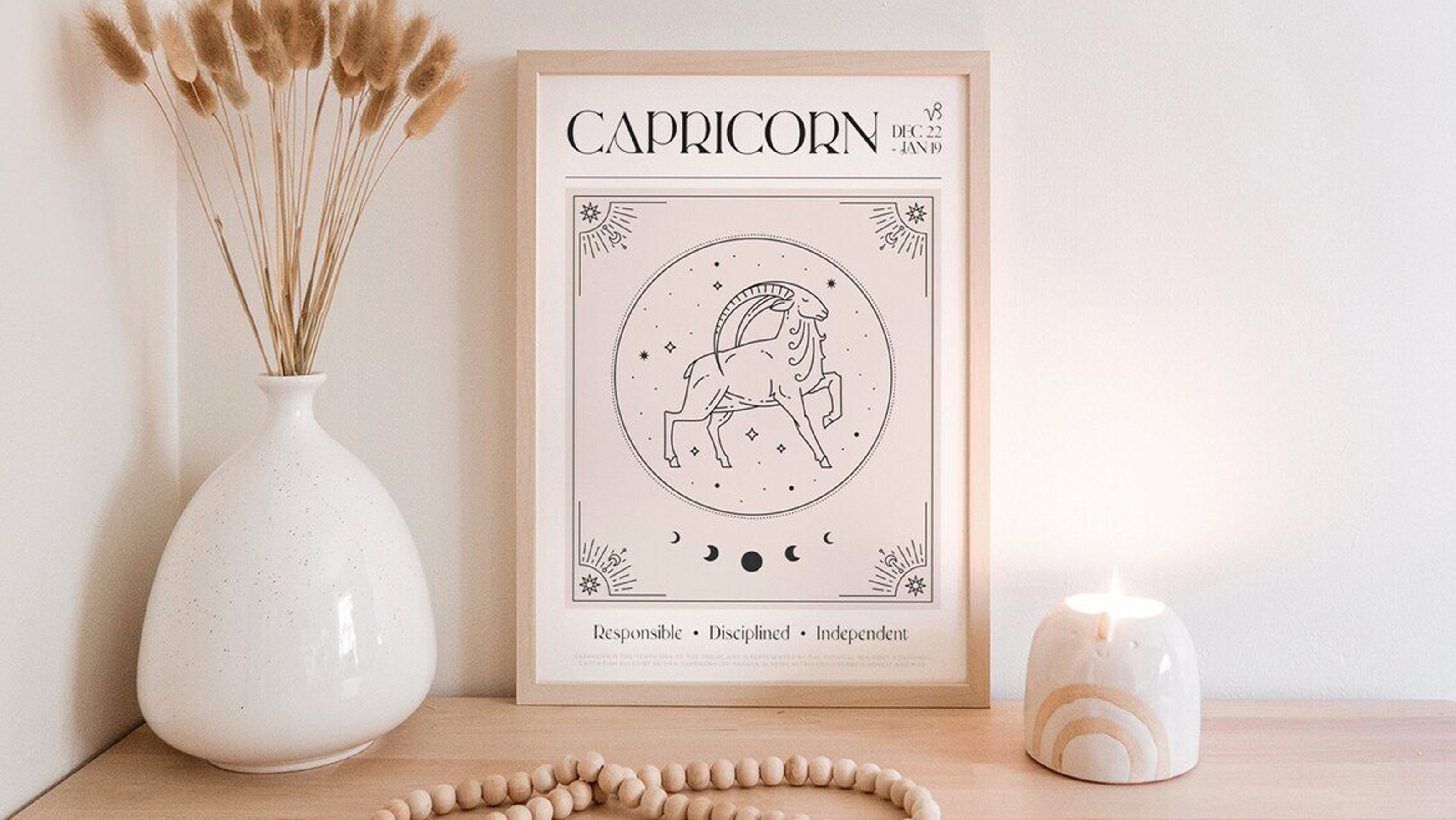 This is how I'm styling my home to snap out of the January blues
This is how I'm styling my home to snap out of the January bluesBanish the winter blues with my favorite happy home hacks that will put the sparkle back into your space (and your special day)
By Holly Phillips Published